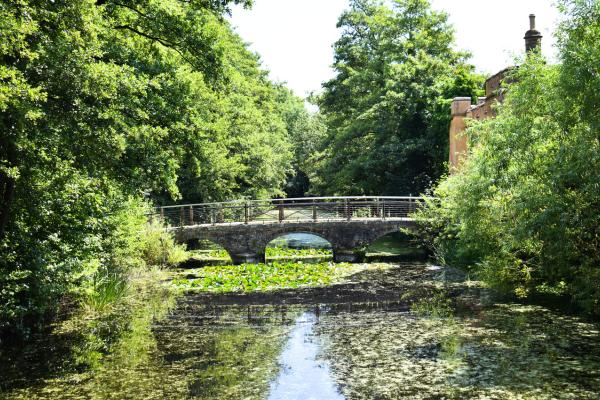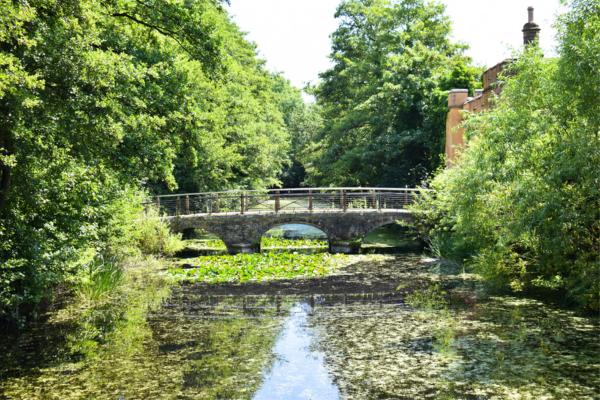So, what is a moat? In dictionary terms a moat is a defensive feature consisting of a long and deep hole that encircles a place such as a castle. Typically filled with water, its purpose is to make it harder for enemies to attack by creating a protective barrier.
Here at Ditton Manor we’re fortunate enough to have one surrounding us and we can’t wait to share more of our knowledge on moats with you!

History Of Moats
Moats have been used since ancient times by civilizations like the Egyptians and Mesopotamians.
In medieval Europe they became famous around castles and fortifications. These wide, water-filled ditches were dug around the structures to protect them from attacks.
Moats made it difficult for enemies to reach the castle walls directly, providing strong defence.
They were crucial for safeguarding the people inside and were part of advancements in military architecture.
Check out our article on “Fascinating Facts About Moats” to learn more!

What Is A Moat? | FAQs
What was the purpose of a moat?
The purpose of a moat was primarily defensive. It served as a protective barrier around castles and fortifications, filled with water to create an obstacle that made it difficult for attackers to approach the walls. Moats forcing soldiers to navigate through the water or find alternative ways to breach the castle defences. Additionally, moats provided a zone where defenders could monitor and deter enemy movements, enhancing the overall security of the fortified structure.
Does a moat have to have water?
No, a moat does not necessarily have to have water. While a lot of moats were typically filled with water, dry moats also existed. Dry moats were dug trenches or ditches around places. Their purpose was similar to water-filled moats, to create a physical barrier that hindered attackers and provided an additional layer of defence. Dry moats were often used in regions where water supply was limited or in environments where maintaining a water-filled moat was impractical.
Were there crocodiles in moats?
Most historical records don’t indicate that castles filled their moats with hungry crocodiles. In reality most moats were designed primarily as defensive barriers, usually filled with water or left dry.


